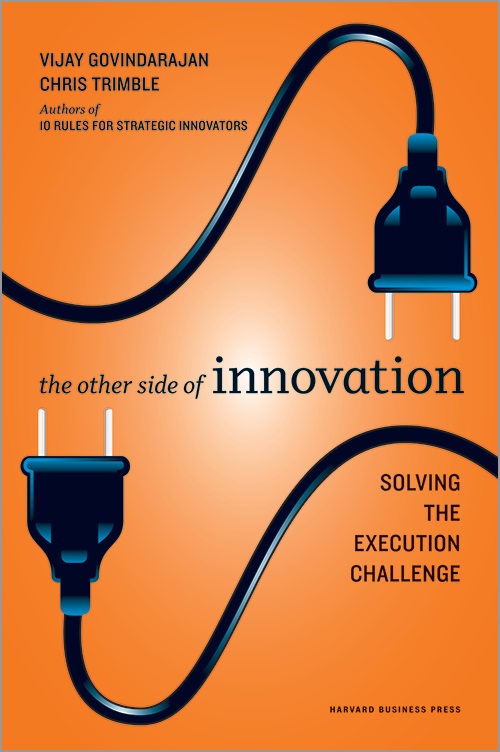R&D is full of i-words: Innovation, Ideas, Incubation, Inspiration and so on. But the most important one, Implementation, is often given too little emphasis.
This book by Govindarajan and Trimble aims to redress the balance. It is aimed at managers of innovation projects in general but the lessons are thoroughly applicable to R&D projects, especially the more innovative ones. It’s a very accessible book, relatively short at 180 pages, plus appendices, and very clearly written. There are plenty of short case studies that illustrate the key points. I found it refreshing and well worth reading.
 The book has three main themes. The first is the importance of managing the interface between the project and the rest of the organisation, which they call The Performance Engine. This term emphasises that the primary job of companies is to serve customers by providing goods and services in a reliable, efficient and repeatable way. This is what most of the people in a company spend their time doing, and they are quite properly measured and targeted on their ability to deliver. Any innovation project will divert attention and resources away from this so there is a conflict that must be managed. This is perhaps not a big issue for incremental product upgrades but it certainly can be for more radical changes.
The book has three main themes. The first is the importance of managing the interface between the project and the rest of the organisation, which they call The Performance Engine. This term emphasises that the primary job of companies is to serve customers by providing goods and services in a reliable, efficient and repeatable way. This is what most of the people in a company spend their time doing, and they are quite properly measured and targeted on their ability to deliver. Any innovation project will divert attention and resources away from this so there is a conflict that must be managed. This is perhaps not a big issue for incremental product upgrades but it certainly can be for more radical changes.
The second theme is that innovative projects are fundamentally to do with learning rather than with doing. It is very important to clarify the questions to be answered and the hypotheses to be tested, and to set up the project accordingly. And the project manager should be judged and rewarded not on whether the project delivers what was hoped for but on whether they conduct an effective investigation. But yet there must also be extra rewards for actually getting the idea to work.
The third theme is about selecting the right team and giving it appropriate oversight.
The authors stress that an exploratory project must have a different type of oversight and evaluation from one that has clear and achievable aims. They also emphasise that a project sponsor from higher management is particularly important, especially when it comes to terminating the project or when it has a major impact the Performance Engine.
This book is really about projects that break new ground so it is not directly relevant for incremental improvements. But it is very relevant for projects that depart from the run-of-the-mill, for example by requiring new ways of manufacture or selling, or changes to the business model; as many R&D projects do.
Review by Rick Mitchell October 2016

